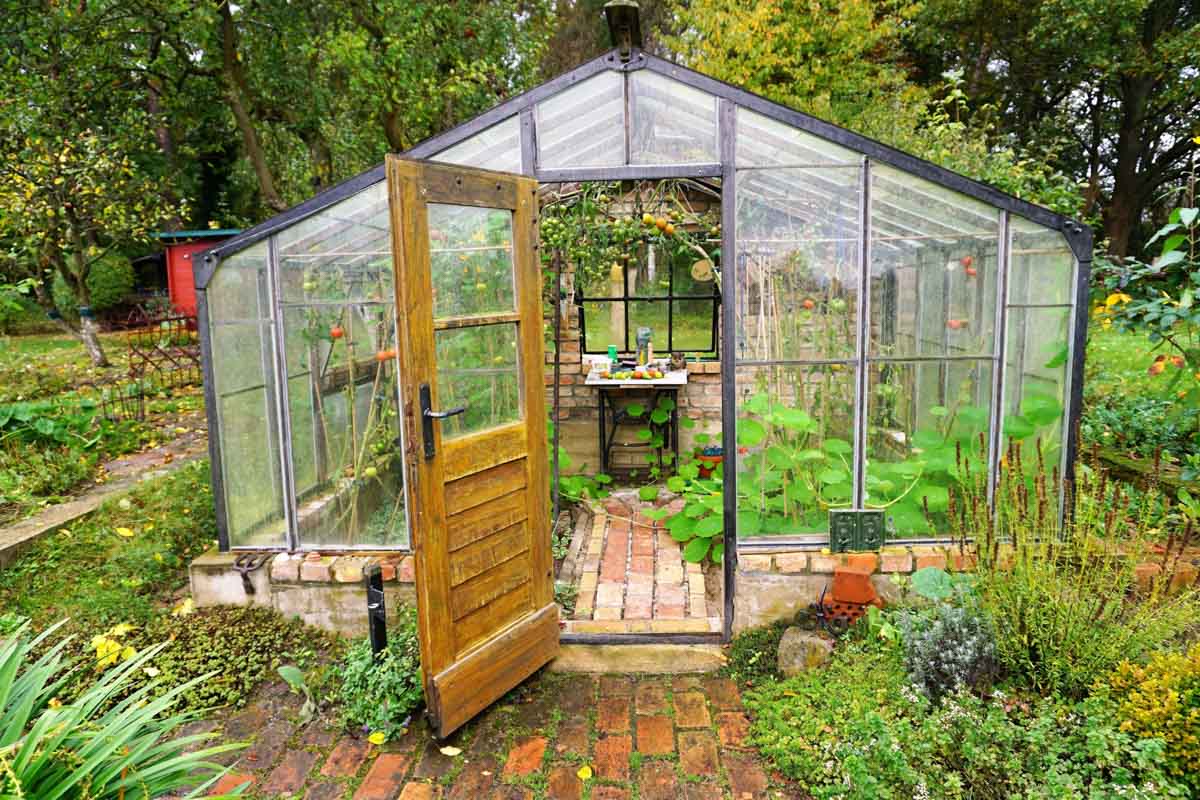Learn how to choose and prepare your greenhouse base with this practical guide.
A greenhouse is a great way to extend the growing season for your plants, and it can also provide a place for you to start seedlings early in the year. However, before you can put your greenhouse up, you need to prepare the base.
In this guide, we’ll discuss some of the best materials to use for your greenhouse base, as well as how to prepare the ground before you start construction. We’ll also take a look at some of the things you should consider when choosing a greenhouse base.
What is a Greenhouse Base?
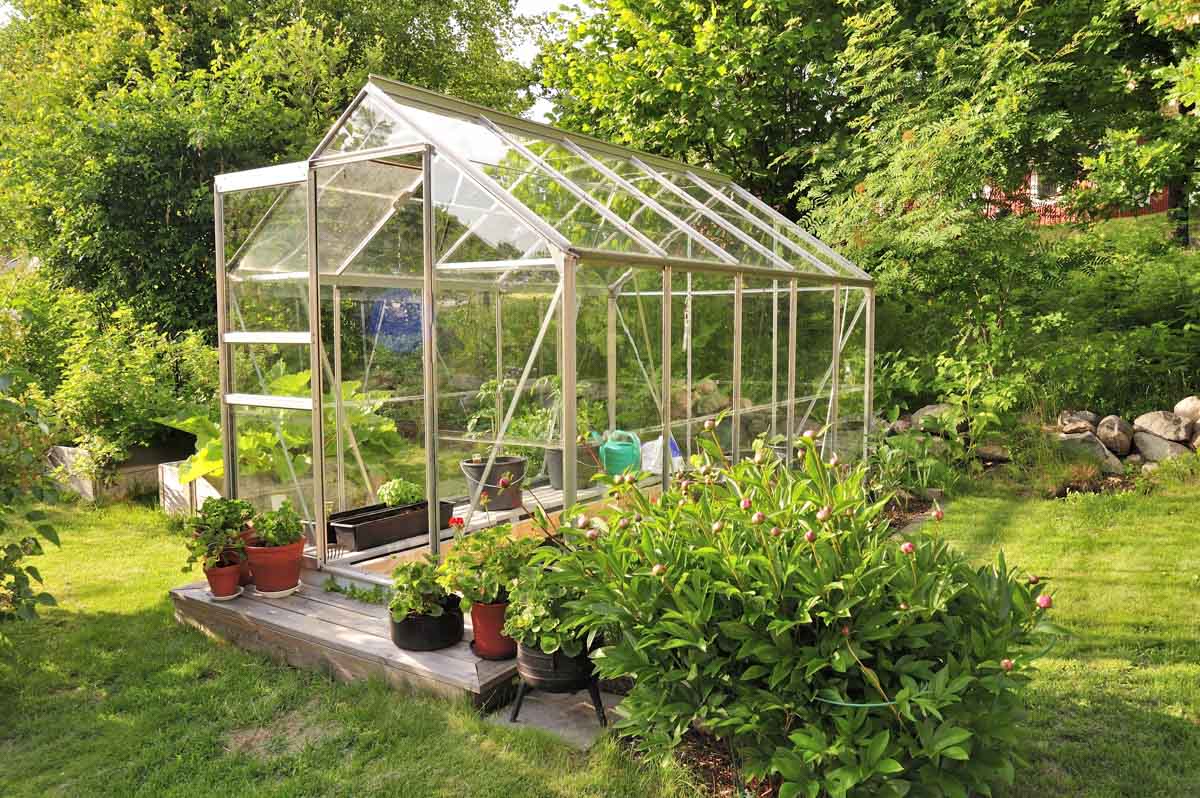
Your greenhouse base is the material you use to fill the area underneath your greenhouse. This provides an even surface on which to place your greenhouse, and it prevents water from pooling around the structure.
Different types of greenhouse bases can be used, depending on what’s readily available in your area and what suits the location you’re planning to build your greenhouse on.
Why Use A Greenhouse Base?
When you start to think about greenhouse bases, you will quickly realize that greenhouse ground preparation is one of the most important parts of greenhouse construction.
If you don’t prepare your greenhouse base properly, then your greenhouse will suffer in the long run. The worst case scenario is it ends up being so severely damaged you need to do extensive remedial work, or even have to replace it.
You can avoid this situation by considering how to create the best foundation for your greenhouse before you install it.
Why is Having a Solid Foundation for Your Greenhouse so Important?
The greenhouse base is important because it affects everything else about your greenhouse. If you build a greenhouse on a weak foundation, then the greenhouse itself will be structurally unstable as a result, which can cause serious issues over time.
We’re not just talking about long-term effects either. If you build your greenhouse on a poor base, then assembly will be much harder.
In addition, if your greenhouse base isn’t prepared properly, water can pool under your greenhouse when it’s raining. This can cause your greenhouse to warp or rot.
Choosing Your Greenhouse Base
There are a few greenhouse base materials that you can choose from when you set out to build your greenhouse foundation.
You can place your greenhouse on concrete or asphalt blocks instead of directly on the ground, and you can even build greenhouse bases out of plastic or metal.
Read on to see the different types of greenhouse foundation, and understand the pros and cons of each.
Compacted Soil
Soil isn’t a great option for a greenhouse foundation as it needs to be extremely well prepared before it can provide a stable base for your structure – and even then it’s not failsafe.
Soil that isn’t properly prepared will lead to shifting and settling while the greenhouse is in use. As soil moves around, the greenhouse frame could warp significantly or even collapse.
Paving Slabs
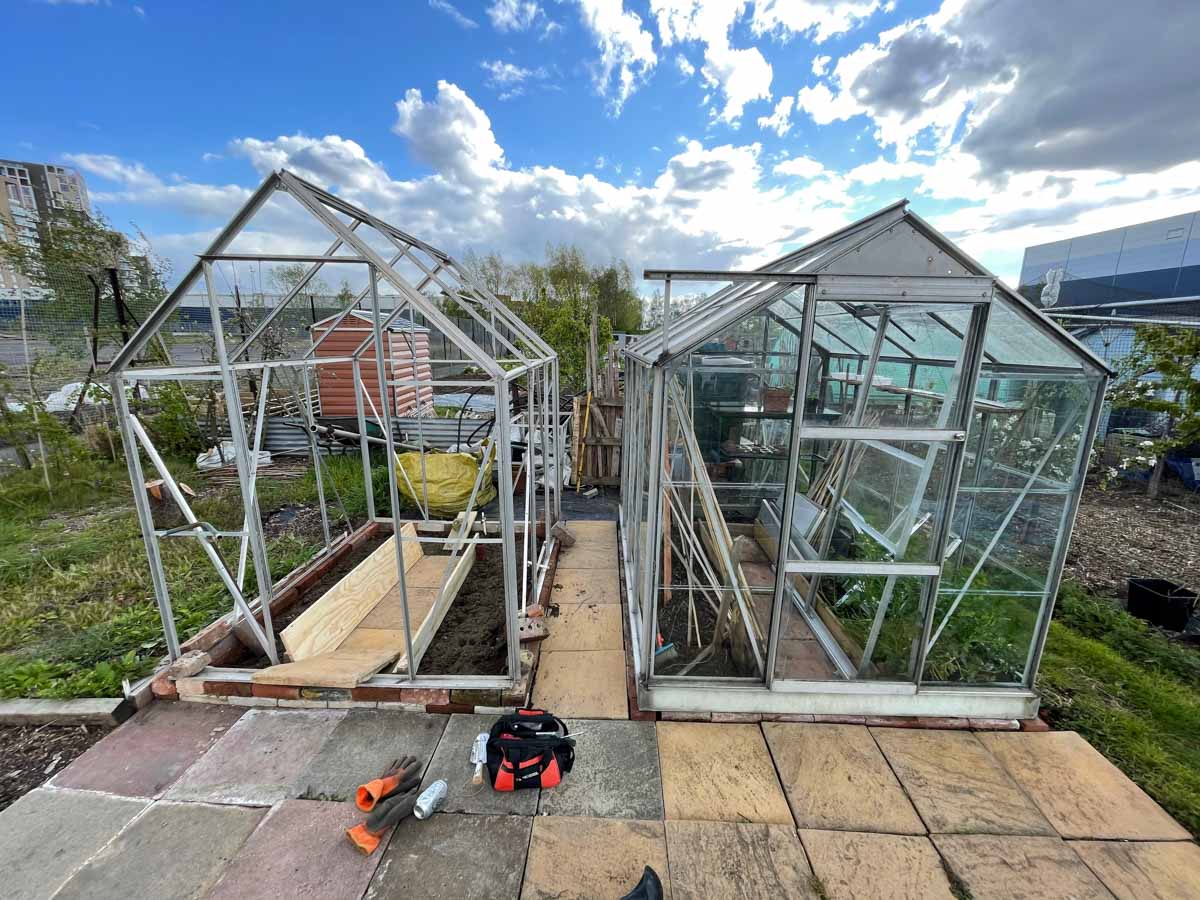
Paving slabs are a popular choice for greenhouse bases and are a good option if installed properly.
To prepare a paving slab greenhouse base area, you need to remove all of the vegetation, then start with clean soil that is free from debris and rocks and completely level.
Once the area has been properly prepared, then you can lay down a weed barrier before putting your paving slabs in place.
Concrete
Concrete bases for greenhouses are very common. In fact, you will often find that greenhouse makers choose to use concrete for the greenhouse base (or foundation), as it is strong and durable.
There are many reasons why concrete makes a good greenhouse foundation. Not least because it is a sturdy material that can withstand weather conditions and generally will not shift or move over time. Plus, it is relatively easy to install and doesn’t require a lot of preparation.
That said, there are some downsides to having your greenhouse sit on concrete. The two biggest issues with concrete is that it doesn’t allow for any drainage and also that it varies significantly in temperature – adding extra heat to the greenhouse in the summer, and making it colder in the winter.
Perimeter Base
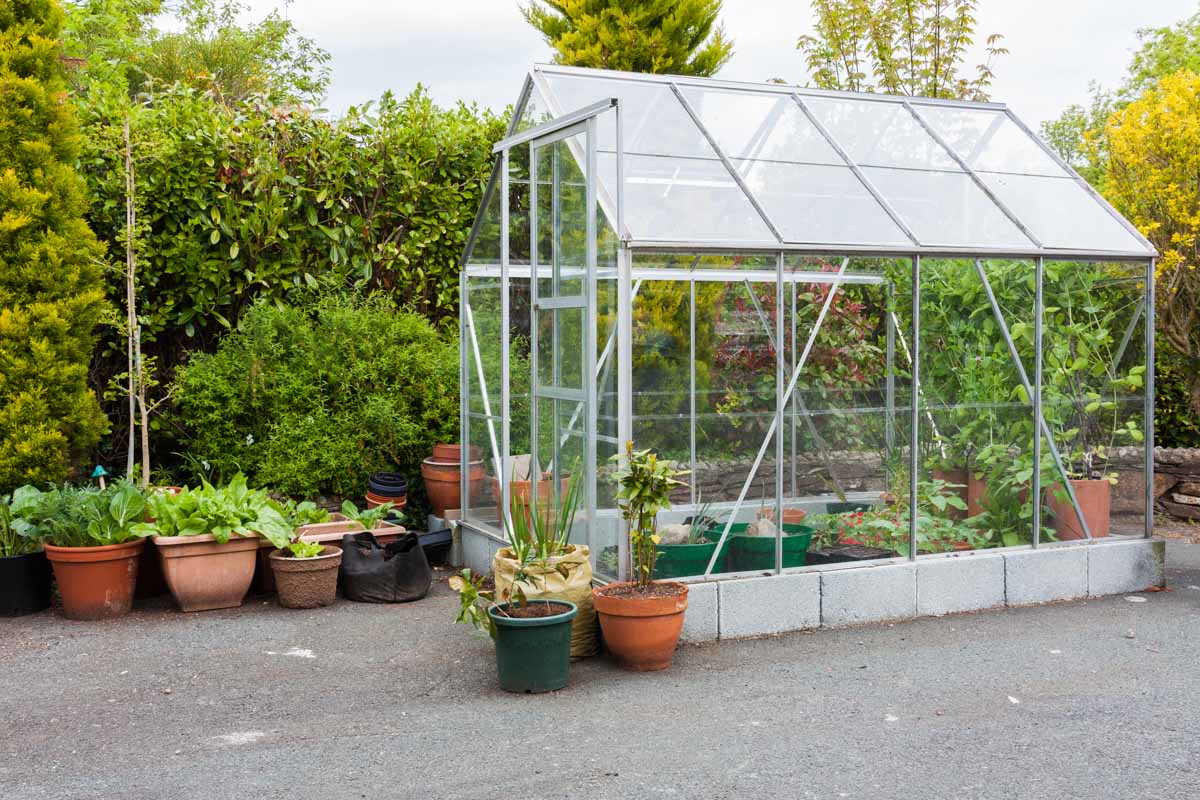
Not so much a type of base as a style of base, a perimeter base is exactly what it sounds like – a base that surrounds the perimeter of the greenhouse but doesn’t extend under the floor of the greenhouse itself.
Perimeter bases are a particularly good option if you are planning to sow directly into non-raised beds in the ground of your greenhouse. They’re also cheaper due to the fact that the surface area of the base is much smaller.
They can be made out of a number of materials: popular options include breeze-blocks, paving slabs and bricks.
Wooden Base
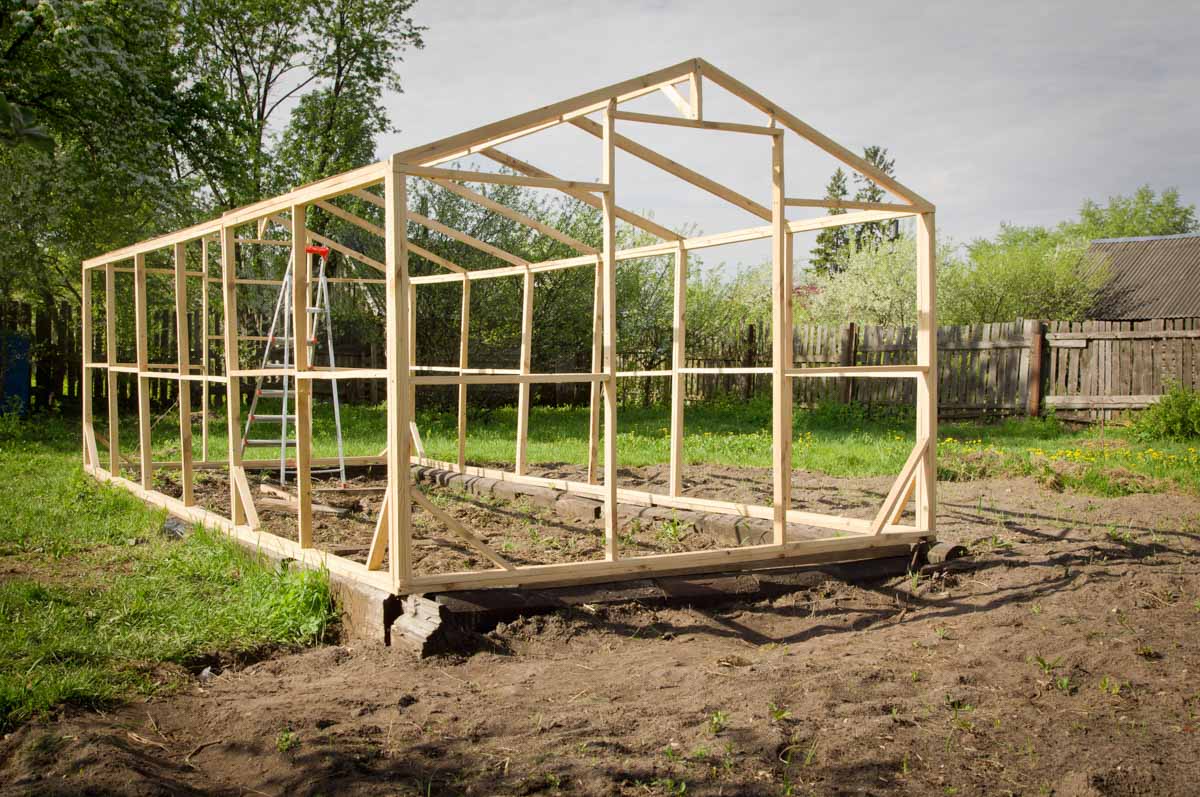
If you don’t want to build greenhouse plans that have a concrete greenhouse base, then a wooden greenhouse base can also be used. Wooden greenhouse bases need to be built from pressure-treated wood so they provide a foundation that will not rot when they come in contact with the ground. By their nature, wooden bases are always perimeter bases, so they are a good option if you are planning to plant in the ground of your greenhouse.
So, What is the Best Base For Your Greenhouse?
Concrete is the most popular option for greenhouse bases as it’s relatively cheap and easy to install and lasts for a long time. However, it’s not a good option if you want to plant direct into beds within your greenhouse.
If this is the case, a perimeter base made from bricks or concrete blocks is both affordable and provides a stable foundation for your greenhouse when laid properly.
By preparing your greenhouse foundation, you can ensure that your greenhouse is strong enough to stand for years of use. Whichever base you choose, ensure that it’s well-installed to provide long-lasting support for your greenhouse in the years to come.
Now You’ve Chosen Your Greenhouse Base, Read These Greenhouse Guides


